
Key Takeaways
- Many AC issues can be fixed by simply checking the thermostat settings and cleaning the filter.
- Check your unit’s power connections to resolve issues like a tripped circuit breaker.
- Complex problems, such as low refrigerant or a damaged motor, require professional assistance.
You rely on your air conditioner to perform reliably every time you turn it on, after all, it’s your go-to for comfort throughout the year. However, there are times when your HVAC unit might let you down and refuse to start. If you’re experiencing this issue, don’t worry!
There can be various reasons why your AC unit is not turning on, including HVAC maintenance issues or your unit getting old. Some problems can be easily fixed as a DIY solution or, in some cases, with a phone call to a professional.
Here’s a helpful guide to diagnosing why your AC unit isn’t turning on and troubleshooting the issue effectively.
Quick Troubleshooting Checklist (Before Diving into Detailed Reasons)
- Check the Thermostat – Ensure it’s set to cooling mode and the temperature is lower than the room temperature. If it’s battery-operated, replace the batteries.
- Inspect the Circuit Breaker – A tripped breaker can cut power to your AC unit, causing it not to turn on. Reset it if needed.
- Look at the Air Filter – A clogged air filter can restrict airflow and prevent the AC from functioning properly. Replace it if it’s dirty.
- Check the Power Supply – Make sure your AC is properly plugged in and the outlet is functional.
Power & Electrical Issues
1. Tripped Circuit Breaker
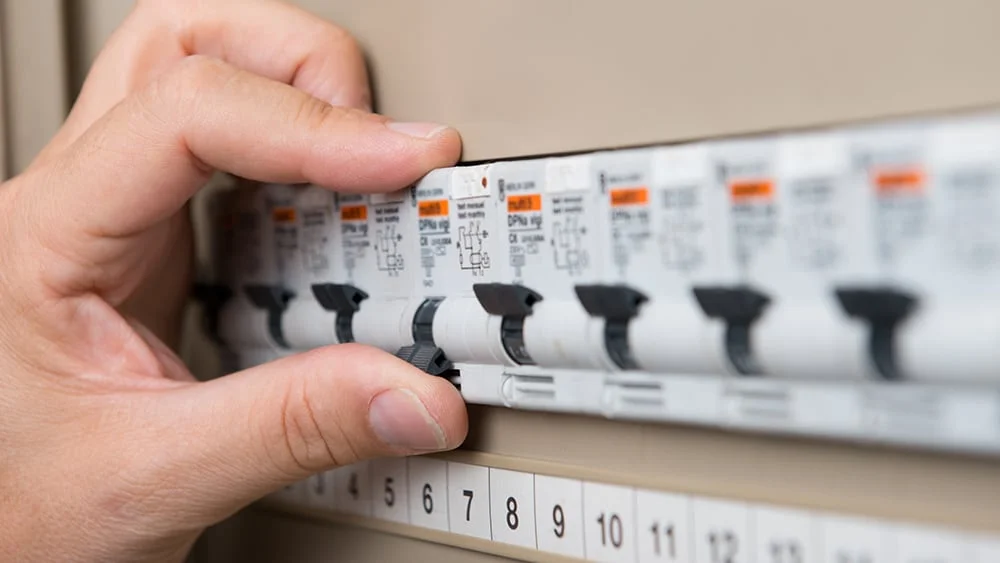
If you have tripped the circuit breaker, your AC won’t turn on.
A circuit breaker is a safety tool that turns the power off in case of high voltage. This may be caused by using high-voltage appliances or power surges in the electricity grid.
Solution:
- Locate the breaker panel in your home.
- Turn it off and then wait for a few minutes
- Then turn it back on.
- Check to see if it has resolved your issue.
Safety Tip: If your AC circuit breaker keeps tripping, do not try to turn it on. It indicates a high voltage that can cause an electric fire, and it needs to be fixed by an expert.
2. Faulty Power Cord or Outlet
Air conditioner wires and cords can easily wear out over time; they are prone to corrosion and fraying. The wires may not be able to properly carry electricity, which can even prevent the AC unit from turning on or it is not the cord but the outlet that was plugged in. You can check if the outlet works fine by plugging in other appliances. If none of them work, you know what’s causing the issue.
Solution:
If the Power Cord Is Damaged:
- Do not attempt DIY fixes with tape or splicing wires.
- Replace the entire power cord (usually available from the AC manufacturer).
If the Outlet Is Faulty:
- Try another wall outlet (preferably on a different circuit).
- If the outlet is loose, discolored, or sparking, call an electrician to replace it.
Safety Tips:
- Avoid extension cords—they can overheat and cause voltage drops.
- Never attempt to repair the cord or power outlet yourself. You risk getting an electric shock if you don’t turn off the power supply. Just turning the switch off won’t do it; you have to turn the power off from the main power box.
3. AC Not Turning On? — Check the Switch
It’s the most obvious reason, but people overlook it all the time.
Like any other electric appliance, your aircon not turning on could be due to the ON/OFF switch. You will find it near where your system is installed.
If you were doing some maintenance tasks or a technician came up to check on something, it may have been accidentally turned off.
Solution:
- Turn on the indoor shutoff switch. The switch is usually in the attic, closet, or near the furnace. If it’s off, turn it back on, and your AC not kicking on will be resolved. It’s best to label this switch to prevent anyone from mistakenly turning it off.
- Verify the thermostat power switch and ensure the screen is active. Replace batteries in case of a battery-operated thermostat.
- Check the outdoor disconnect switch near the condenser unit and make sure it’s on.
- Reset your AC Unit by unplugging it for 5 minutes, then plugging it back in.
- Inspect the circuit breaker and reset it if it has tripped.
- If the AC still doesn’t turn on, consult an HVAC professional for further diagnosis.
Thermostat Related Problems
4. Thermostat Malfunctioning
Your air conditioner has stopped working all of a sudden. You panic and start calling your HVAC technician.
But stop for a second. Have you checked your thermostat?
Thermostat malfunction can have an impact on your air conditioner’s performance.
Solution:
- First, check if the display of your thermostat is lit. If it’s off, it cannot signal the AC to turn on.
- If the thermostat screen is blank or unresponsive, replace the batteries (if applicable) or check if it’s properly wired.
- Sometimes, the thermostat is accidentally set to Heat or Off. Set it to a cool setting, keeping it 5-6 degrees lower than the indoor temperature.
- Remove the thermostat cover if required and look for loose or disconnected wires. If unsure, call an HVAC technician.
- Also, look for debris or corrosion buildup. You can clean out the debris with a soft brush, but you must contact a professional for corrosion issues.
- Reset your thermostat; the actual method will vary depending on your thermostat. In some models, you might need to take the thermostat off the wall and reattach it after a few seconds. Others may require you to remove the batteries and put them back in to complete the reset.
- If the thermostat still isn’t working, it may be faulty or outdated—consider replacing it with a smart thermostat for better efficiency.
Equip your HVAC system with smart features and achieve the perfect balance between comfort & savings.
Learn more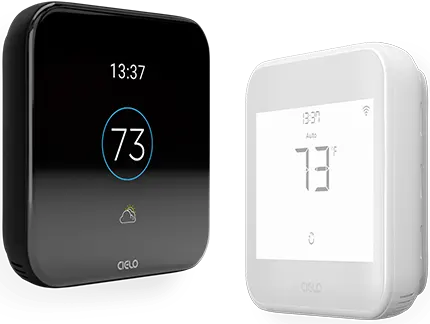
5. False Temperature Readings
Your AC may not turn on if it’s receiving inaccurate temperature readings. This issue can arise from a faulty thermostat sensor or an incorrect thermostat placement.
Solution:
- Ensure that your thermostat is centrally located, away from direct sunlight, drafts, and other heat sources.
- Remove the thermostat cover. Gently wipe dust off the temperature sensor to ensure accurate readings.
- Calibrate the thermostat to adjust temperature settings if needed.
- Ensure there are no drafts or air leaks around the thermostat affecting its reading.
Lack of Maintenance
6. Clogged Air Filters
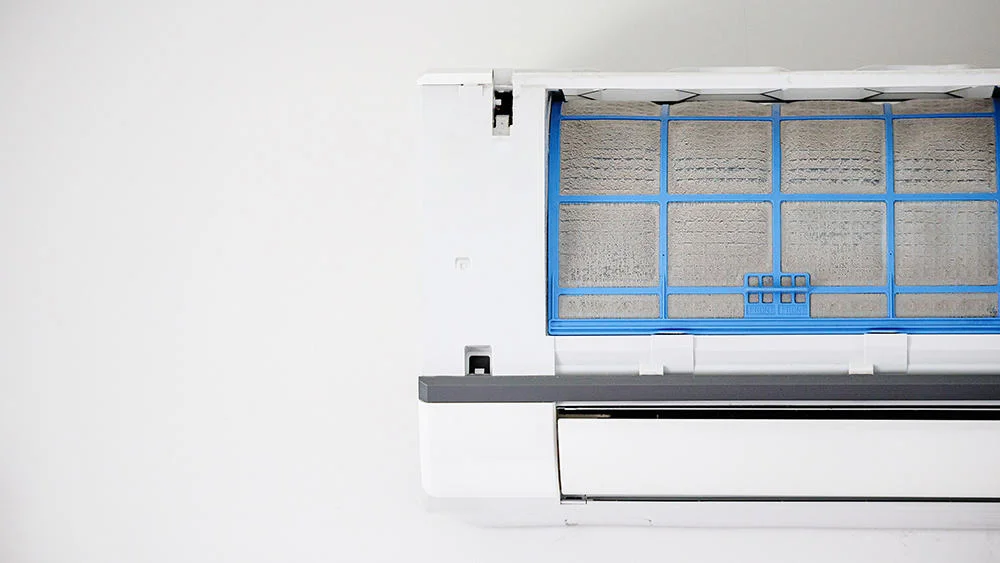
Do you remember the last time you cleaned your AC filters?
If your answer is no, then it’s a big problem as your AC may not work properly due to dirty, clogged filters. No matter what type of air conditioner you have, cleaning the filters is a must!
You can opt for a smart device like Cielo smart thermostats for mini-splits that provide helpful air filter cleanliness reminders.
Your best choice to make any mini-split, window,
or portable AC smart. Enhance your comfort and savings.
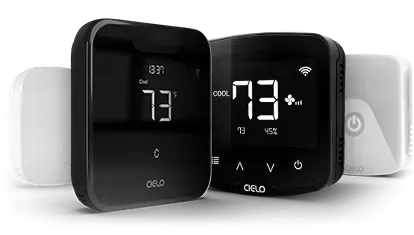
Solution:
- Turn off the AC before checking the filter.
- Locate the air filter; this will vary depending on your AC type.
- Remove and inspect the filter—if it’s dusty or blocks light, it’s clogged.
- Clean or replace the filter depending on its condition and the type of filter.
- Reinstall the filter and turn the AC back on.
- Clean filters every 2 weeks and replace them every 3 months for better airflow and efficiency
7. Debris Laden Condenser
Is your outdoor AC unit not turning on?
The job of the outdoor unit is to release the heat collected by the inside unit to the external environment. Without regular cleaning, it can get dirty over time. Dirt acts as an insulator, so it has to work harder to disperse the heat. It will start drawing too much current, tripping the circuit breaker, and your AC won’t turn on.
It’s best to clean your outdoor unit as part of your spring HVAC maintenance to avoid any major issues during the peak cooling demand in summer months.
Solution:
- Turn off the AC before cleaning the condenser.
- Inspect the outdoor unit for dirt, leaves, and debris buildup.
- Clear the area around the unit—keep at least 2–3 feet of open space.
- Brush off loose debris using a soft brush or vacuum with a brush attachment.
- Rinse the outdoor coils with low-pressure water to remove stubborn dirt.
- Straighten bent fins using a fin comb for better airflow.
8. Clogged Drain Pan
Your air conditioner unit not only cools or heats your house but also removes moisture from the air. So, where does that moisture go?
It is collected in the drain pan and then flows into the condensate drain line, which is directed outside. The pan has a secondary drain to prevent clogging. But if both are full, this triggers the float switch, which turns the AC off. It is a safety mechanism that prevents excessive leakage in your house and prevents damage to the unit. But even then, the water leak from the clogged drain pan can damage your walls, ceilings, and furnishings.
Solution:
- Turn off the AC to prevent water damage or electrical issues.
- Locate the drain pan under the indoor unit and check for standing water.
- Use a wet/dry vacuum to unclog the drain.
- Check for mold or algae buildup and clean with a mild disinfectant.
- To avoid issues, perform regular AC maintenance.
9. Your AC Is Freezing Up
Dirty air filters and a clogged drain pan cause your AC to freeze up. Running the AC on a cold night or a lack of adequate refrigerant can also cause this problem. This hinders your system’s functioning and, in some cases, is the reason why your AC unit is not turning on.
The indoor unit of your AC has the evaporator coil, and the outdoor unit contains the compressor. The refrigerant line is between these two components. When the airflow is restricted, warm air from your house does not reach the refrigerant, which then becomes so cold that any moisture on the coils freezes.
Solution:
- Turn off the AC and let the ice thaw completely before restarting.
- You can use a hair dryer to speed up the process. If you notice water dripping outside the drain pan, use a wet vacuum to clean it.
- Adjust the thermostat to a moderate temperature to prevent overcooling.
- Also, dig deeper into why your AC coils froze in the first place. Check and replace the air filter if it’s clogged to restore proper airflow. Clean the evaporator coils to remove dirt buildup that affects heat absorption.
Refrigerant Issues
10. Low Refrigerant Levels
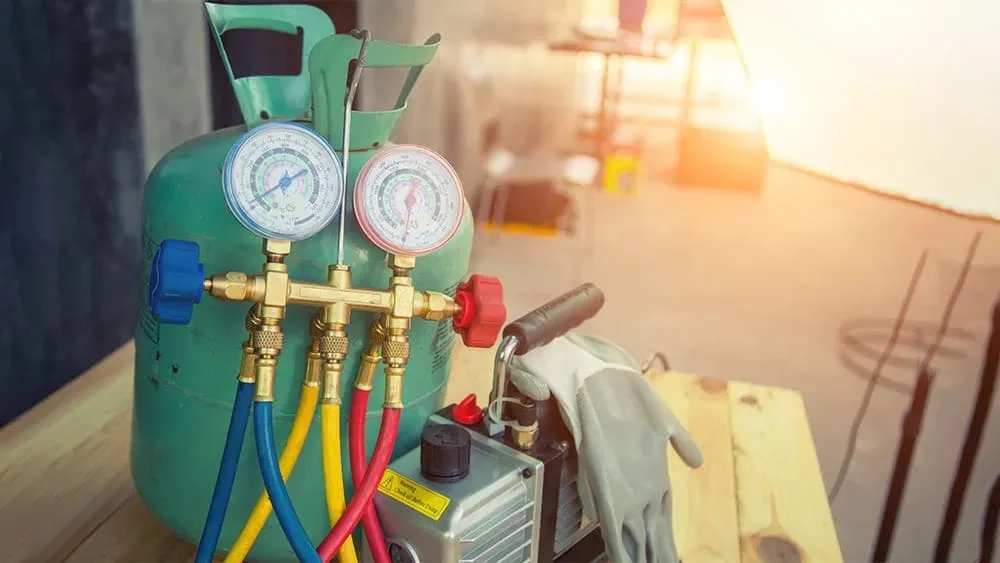
One of the reasons your AC is not turning on could be due to a refrigerant shortage.
The refrigerant shortage is mostly due to leakage and not because your AC has used up the fluid. The cracks in the AC coil (which contains the refrigerant) may build up over time, leading to refrigerant leakage. Further, not taking time for regular maintenance can lead to corrosion in the long run.
Low Refrigerant Levels – Signs & Solution
- Weak cooling, hissing noises, or ice buildup on the coils are common signs of low refrigerant levels.
- Never attempt to refill refrigerant yourself, as it requires professional handling.
- Contact an HVAC technician to locate and fix leaks before recharging the system.
- Regular maintenance can prevent leaks and ensure efficient cooling.
Component Failure
11. Your AC Capacitor Has Died
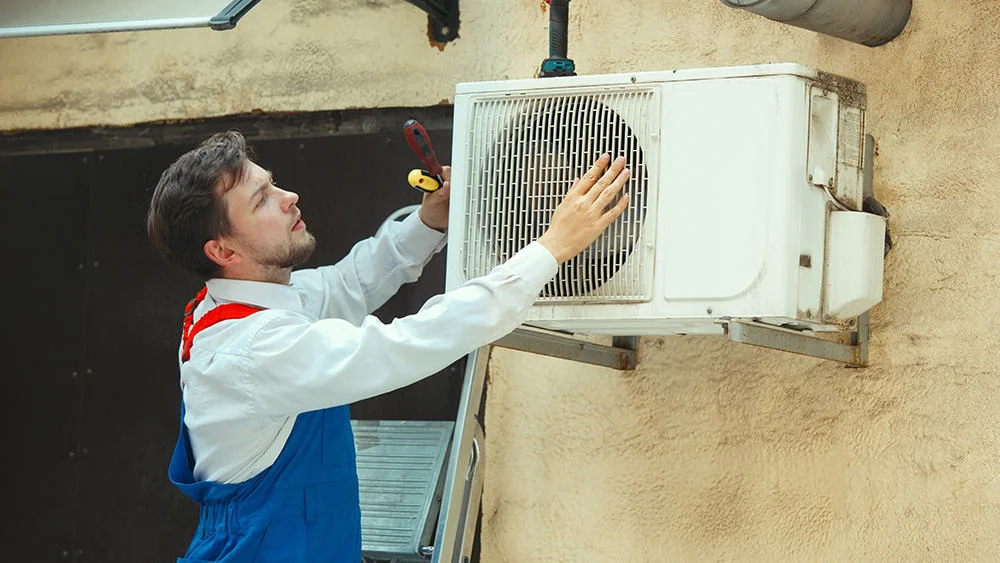
If your unit has trouble starting, starts and stops abruptly, or makes unusual AC noises like a clicking sound when you turn on the outdoor AC unit, chances are that the AC’s capacitor has died down.
The capacitor is an integral part of your HVAC system. It is connected to the motor’s circuit and gives the motor an initial push to start running. The capacitor disconnects from the circuit once the motor reaches a specific speed.
Your AC’s capacitor is sensitive to heat. Overheating can be caused by your AC working hard to achieve the desired temperature or by its exposure to the sun. For example, if your outside unit is installed on the roof, it will likely become a victim of overheating on hot summer days. Power outages and power fluctuations can also significantly damage the capacitor.
Solution:
- Turn off the AC unit power before inspecting the capacitor.
- Check for bulging or leaking on the capacitor, which indicates damage.
- Do not attempt DIY replacement, as capacitors store electricity, and there is a risk of severe electric shock.
- Call an HVAC technician to test and replace the faulty capacitor safely.
- To prevent damage from power fluctuations, consider installing a surge protector.
Note: Never try to run your AC on a bad capacitor, as it can burn the attached motor, and replacing the motor can be quite costly.
12. Damaged Motor
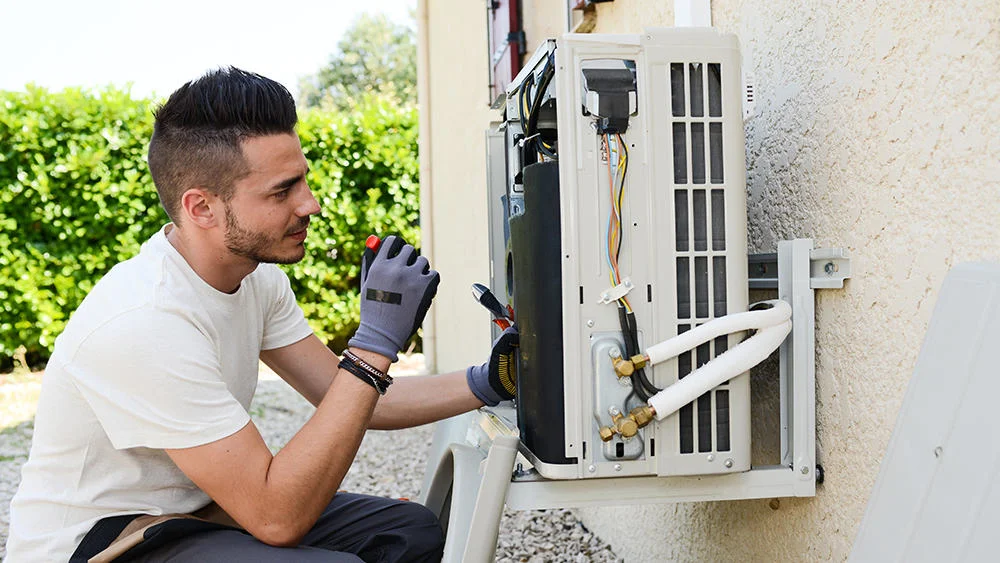
If you hear a grinding noise when you turn on the AC, it is not a good sign as it may indicate malfunctioning motor blades.
Motors are sealed to prevent contact with the outside air, water, or debris. Over time, due to old age or lack of maintenance, the seal can come off, and the oil, which was sealed within the motor and needed for lubrication, seeps out. Without oil, the motor can wear out and stop working entirely after some time. The outside unit cannot dissipate heat if the motor is faulty.
Solution:
- Turn off the AC to prevent further damage.
- Inspect the motor fan blades for obstructions or visible damage.
- Check the capacitor, as a faulty one can stop the motor from running.
- If the air conditioner is not kicking on, try troubleshooting the system further or consider contacting a professional for help fixing the AC.
A common question is whether to repair the motor or replace the entire AC. Here’s a simple rule of thumb: if the repair costs half or more of the original price of your system, it’s better to replace it. Consult an HVAC specialist for a professional assessment.
Operational Issues
13. Dormancy
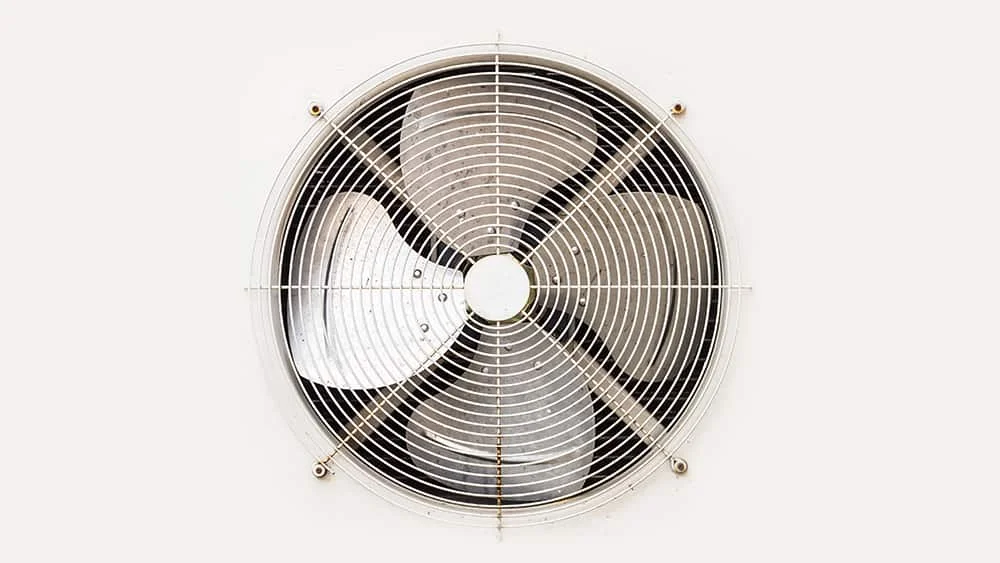
If your cooling system was lying dormant in winter and you switched it on after some time, then the fans may find it hard to start rotating again because of the dirt buildup.
Solution:
- Start by performing a pre-season check: clean the unit, inspect for any physical damage, and ensure all connections are secure.
- Run the system briefly to identify immediate issues and verify that the thermostat is set correctly and functioning properly.
- If you still notice the AC not turning on despite a clean setup, it may indicate a deeper mechanical or electrical issue that needs professional attention.
14. Your AC Requires Resetting
When your AC is having trouble turning on, a simple reset may be the solution. Check your AC manual and see if your unit has a reset button, as not all HVACs do.
- If your unit has it, hold the reset button for 2-5 seconds and then release
- If your system doesn’t have a button, you can manually reset it. Flip the circuit breaker that powers your AC. Also, turn off your AC switch. After 5 minutes, turn the breaker and AC switch back on.
- Another way to manually reset is to turn your thermostat off for 5-10 minutes and then turn it back on.
After performing the AC reset, set your thermostat to cool and at a low temperature. After some time, place your hands in front of the vents to confirm that your unit is doing its job.
Sizing & Age-Related Problems
15. Your AC Is Not the Right Size
An air conditioner that is not the right size will have to work harder and eventually break down completely.
When your AC is larger than required, it will keep turning on and off quickly, increasing wear and tear. Further, it won’t be able to remove the excess humidity as it won’t stay on for a sufficient time.
On the other hand, a small unit will have to run for a long time to cool/warm the house, which may cause the capacitor to overheat.
Unfortunately, the only solution is to replace the AC unit.
How to Size an AC Unit:
Some parameters determine what size you require, such as the area of your house, climate, number of windows, and insulation level. You will have to go for a professional evaluation to find out the perfect size of air conditioner for your home.
There is also an equation that roughly estimates the right size of AC.
(Square footage of your home x 25/ 12000) – 0.5 = Required AC size
Let’s say your area is 1000 square feet.
(1000×25/12000) – 0.5= 1.5
You require a 1.5-ton AC.
16. Is Your AC Not Turning on or Has It Run Its Course?
Your AC has stopped running, and you are wondering why. If it has been your comfort companion for quite a long time, it may have reached the end of its lifespan.
Signs of Failure and What to Do Next:
- Your AC requires repair services on a frequent basis, which could indicate problems related to its lifespan.
- Assess your air conditioner’s age (ACs over 10–15 years may need replacement).
- Your electricity bills are increasing at an abnormal rate. This is because, near the end of its life, the AC becomes sluggish and overworked to maintain the desired temperature.
- If your AC is making weird, loud noises such as grinding, screeching, or rattling, it’s time to replace it, as this signals a serious problem.
Some of these indicators might just be dealt with with a professional tune-up, while others might require a replacement. Do not decide on your own; have a professional thoroughly check your unit before you go for a replacement.
In Conclusion
If you’ve successfully diagnosed and fixed why your AC wasn’t turning on, congratulations! However, you should still contact a professional for a thorough inspection to prevent similar air conditioner issues in the future. Having an HVAC expert perform an annual inspection and keeping up with regular maintenance can help avoid potential AC problems down the line.
Frequently Asked Questions
What Should I Do if My AC Is Not Kicking on After Winter?
If your air conditioner is not turning on after being idle all winter, you're not alone — it’s a common seasonal hiccup. Dirt buildup, wires being chewed on by the rodents, or even corroded parts can prevent your system from starting. Before calling for help, do a quick check on your thermostat, power supply, and air filter. Incorporating a pre-season maintenance routine can prevent these issues altogether next time.
Why Is Your AC Not Coming on During High Heat?
If your HVAC system is not turning on during extreme heat, it might actually be a built-in safety mechanism. Systems sometimes shut down temporarily to avoid overheating. But if it doesn’t come back on, it could be a sign of an overloaded capacitor or an electrical issue.
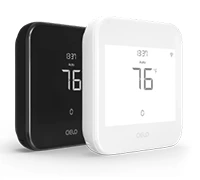
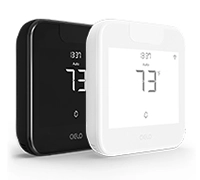
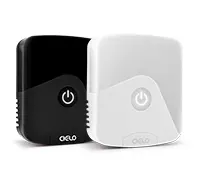
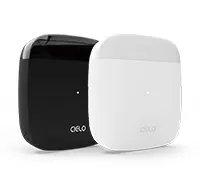
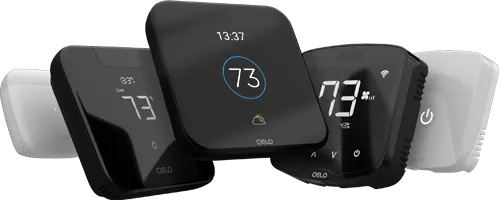
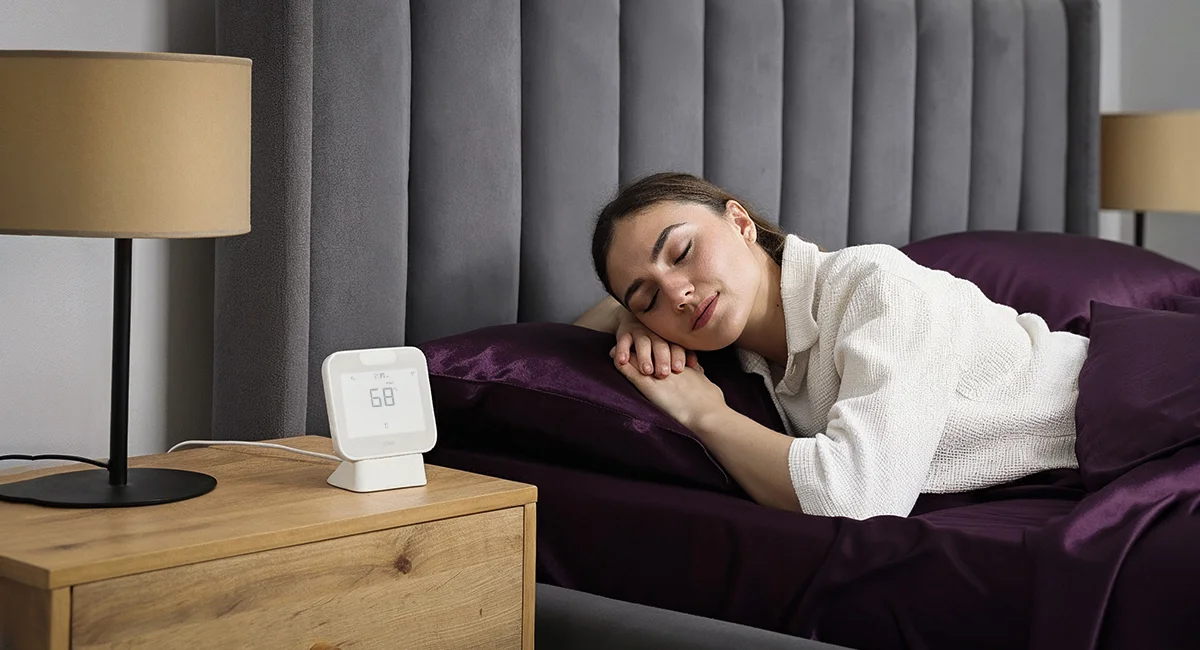



12 Comments. Leave new
Thank you for outlining the 16 reasons why an AC might not be turning on and how to fix them! Your detailed explanations and practical solutions are incredibly helpful for anyone facing this frustrating issue.
I turned on the heat yesterday, and now the AC doesn’t work at all. The unit won’t come on, and I’ve checked the breakers, which are all fine. I’m not sure what’s wrong. Any help would be appreciated. Thanks!
If you have kids or live with aged people, having an AC unit is crucial, so any issues in our AC must be adequately addressed as soon as possible.
My AC cannot turn on again once it stopped, the only way is that I get to the house circuit breaker switch, and switch off and on again. Then I can use it for the time to heat up or cool down the room, but again next time it get turned off, I have to do the same. Does this ring a bell to you, have you exprienced such failure on other AC ? (my AC is a Toshiba RAS-B10UFV-E (internal unit) and RAS-10SAV2-E (external unit).
Thanks for the information
I think my AC might not be cooling because it’s not the right size. It could be too small which would make it work harder and potentially break down. I’ll be sure to contact a technician to see if this might be the problem.
A few days ago, we started noticing how our cooling system stopped working! My wife and I tried to fix it, but we think we didn’t succeed, so we’ll start looking for a specialist! Thanks for the information on an AC’s capacitor and what to do if we have a damaged one.
My sister’s ac is already clogged, and that is why she’s thinking of having it well-maintained. I also agree with you that regular cleaning is a must. Thank you for sharing here as well that its coil must be cleaned too.
I went to turn my heat on yesterday and the AC quit working now that the AC does not come on or anything I just checked the breakers they are all fine but I do not know what’s wrong with it
Nice answers and teaching
Came home after a week out of Town. Air will not come on. Thermostat is not displaying anything. We have never had batteries in it. Put batteries in and display came on, but air still will not come on. Have checked everything on troubleshooting list. Can’t find a problem. Breaker wasn’t flipped, but there was a bad thunderstorm while we were gone. Could that cause an issue?
Hello, i am usually a do It Yourself person. But I will not work with electricity. my AC unit will not come on, The heat works fine but Air will not , I don’t hear the unit click on or the fan. This has happened before but eventually came on. Just wondering if the unit is gone bad.